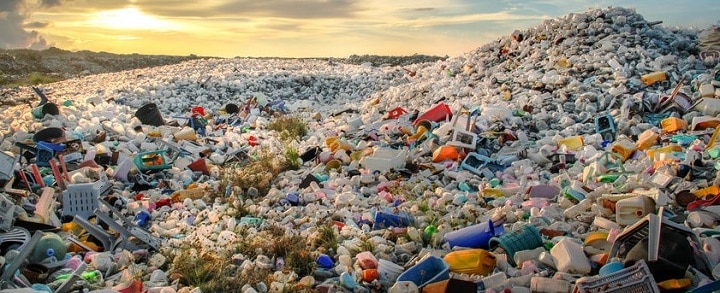In an industrial context, hazardous waste includes common products like paint, solvents, chemical residues, as well as by-products generated during industrial processes.
Materials that meets one or more of these harmful features can be considered as hazardous:
- Ignitability (flashpoint < 60oC or supports combustion)
- Reactivity (for instance: water reactives, cyanides, explosives, unstable chemicals)
- Corrosivity (ph < 2 or > 12.5)
- Toxicity (for example pesticides, heavy metals, organic compounds)
- Or if the mixture contains both hazardous waste and non-hazardous waste.
Which are the waste disposal methods available nowadays?
Currently, it has become more important than ever to manage the huge quantities of waste derived from human activity and production processes. There are several waste disposal methods widely used nowadays to manage waste:
- Source reduction & re-use: Source reduction, also known as waste prevention, is eliminating waste before it is created. It involves changes in the design, manufacture, purchase, and use of materials and products in order to reduce the amount and toxicity of waste. So, in fact, source reduction means preventing waste from happening.
- Recycling & recovery: With recycling, we are giving waste a second life. When we recycle, we bring an object back to the state of raw material that can be used again for further production and consumption. Recycling is a frequent method of waste disposal. Regarding recovery, it happens when most of the material considered as waste is used and processed in ways other than being destroyed.
- Waste Incineration: Incineration is a waste treatment process that involves the combustion of organic substances contained in waste materials by means of high temperatures. Waste Incineration technology can be installed in several industries to treat hazardous waste, refining residues, chemical waste, pharmaceutical waste, hospital & medical waste, wastewater plant sludge, NORM (natural radioactive) waste, etc. Incineration and other high temperature waste treatment systems are also called thermal treatment. Waste incineration eliminates waste and transforms it into a small number of ashes, flue gas and heat, which can be further used as energy for industrial processes.
- Landfills: A landfill is a dumping ground where waste materials are disposed of by burial. It is the oldest form of waste treatment and has the most disadvantages due to the high toxicity of waste gases being released directly into the atmosphere and to the sites being located relatively closed to populated areas, especially in developing countries. In Europe, landfilling remains popular in some eastern and southern parts of Europe. However, the trend is to gradually eliminate landfills as a way of managing municipal waste. In this sense, landfills are gradually being closed and other waste disposal methods are being used instead, such as Waste Valorisation Plants.
At Tecam Group we design and install Waste Incineration plants to manage waste generated during industrial processes from several sectors, from Chemical to Petrochemical, Oil & Gas, etc



















